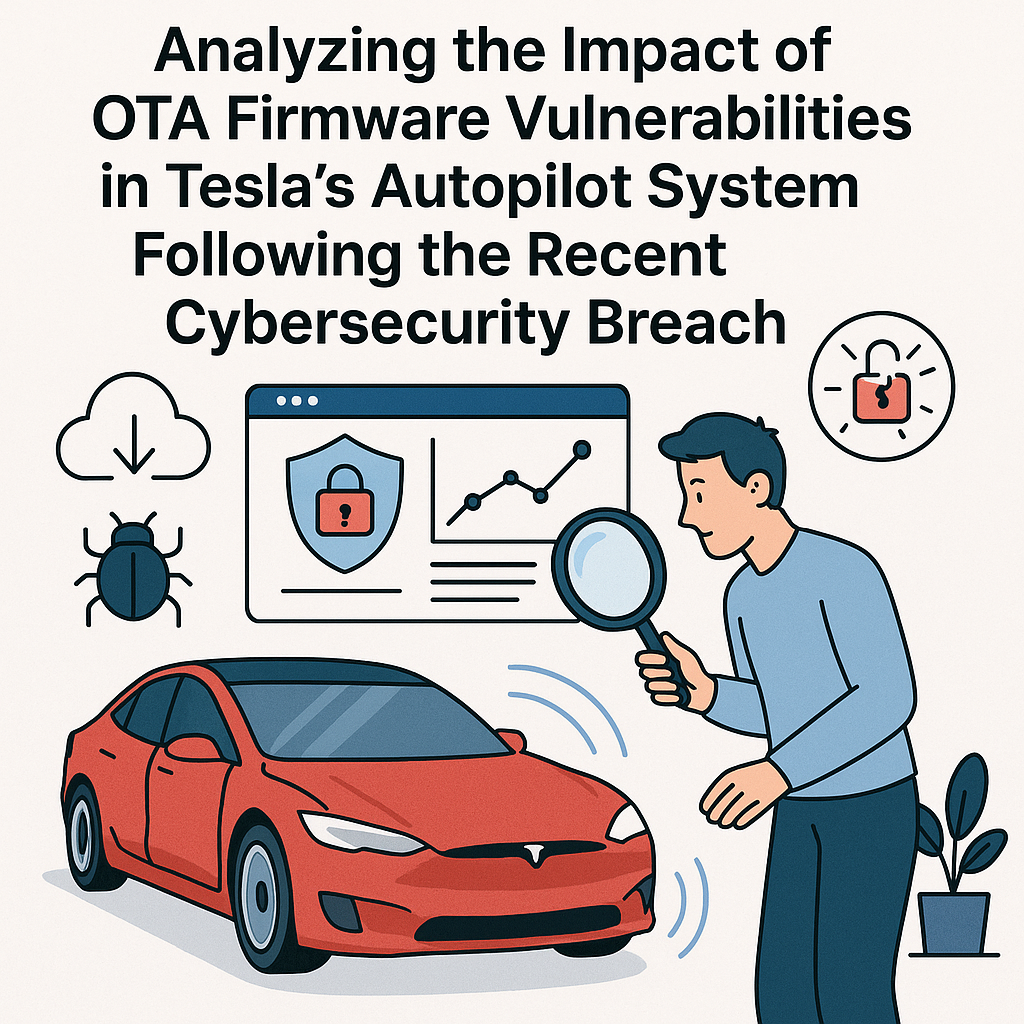Introduction
In recent years, the rise of over-the-air (OTA) firmware updates has revolutionized the way automotive manufacturers, particularly Tesla, enhance their vehicles’ software capabilities. However, this convenience has also opened doors to potential cybersecurity vulnerabilities. Following a notable cybersecurity breach, it is crucial to analyze the impact of OTA firmware vulnerabilities in Tesla’s Autopilot system and understand the implications for users and the automotive industry as a whole.
Understanding OTA Firmware Updates
OTA firmware updates allow manufacturers to remotely update the software in their vehicles without requiring a physical visit to a dealership. This feature provides numerous advantages, including:
- Continuous Improvement: Manufacturers can fix bugs, improve performance, and add new features seamlessly.
- Cost-Effectiveness: Reduces the need for physical recalls and service appointments.
- Enhanced Safety: Critical security patches can be deployed quickly to address vulnerabilities.
The Cybersecurity Breach
Recently, Tesla experienced a significant cybersecurity breach that raised alarms regarding the safety of its OTA firmware updates. Hackers reportedly exploited vulnerabilities in the Autopilot system, which is critical for many of Tesla’s advanced driver-assistance features.
Key details of the breach include:
- Unauthorized access to the vehicle’s firmware.
- Potential manipulation of the Autopilot system functionalities.
- Risk of data theft, including user personal information and driving behavior data.
Analyzing the Impact of OTA Firmware Vulnerabilities
The vulnerabilities associated with OTA firmware updates in Tesla’s Autopilot system can have far-reaching consequences. Here are some of the key impacts to consider:
1. Safety Risks for Drivers and Passengers
One of the most significant concerns stemming from the breach is the potential safety risks posed to drivers and passengers. If hackers can manipulate the Autopilot system, it could lead to:
- Erratic vehicle behavior, including sudden acceleration or braking.
- Loss of control over critical driving functions.
- Increased likelihood of accidents, endangering the lives of occupants and others on the road.
2. Erosion of Consumer Trust
Consumer trust is paramount in the automotive industry. This breach could have a detrimental effect on Tesla’s reputation, leading to:
- Decreased customer confidence in the safety of Tesla vehicles.
- Potential declines in sales as consumers seek more secure alternatives.
- Long-term damage to the brand’s image as a leader in innovation and safety.
3. Regulatory Scrutiny and Legal Implications
Following the breach, regulatory bodies may take a closer look at Tesla’s security practices. Potential implications include:
- Increased regulatory scrutiny regarding vehicle cybersecurity standards.
- Potential fines or penalties for failure to adequately protect consumer data.
- Legal actions from affected users seeking accountability for breaches.
4. Financial Impact on Tesla
The financial repercussions of the breach could be significant. Potential impacts include:
- Costs associated with repairing the vulnerabilities and enhancing security measures.
- Potential loss of revenue due to decreased sales and customer attrition.
- Legal fees and settlement costs resulting from lawsuits or regulatory fines.
Mitigating Future Risks
To address and mitigate the risks associated with OTA firmware vulnerabilities, Tesla and other manufacturers must take proactive measures, such as:
- Enhancing Security Protocols: Implementing stronger encryption methods and multi-factor authentication for firmware updates.
- Regular Security Audits: Conducting frequent audits and penetration testing to identify and address potential vulnerabilities.
- Transparency with Consumers: Keeping customers informed about security measures and providing timely updates about potential risks.
Conclusion
The cybersecurity breach affecting Tesla’s Autopilot system highlights the vulnerabilities associated with OTA firmware updates. While these updates offer significant advantages for manufacturers and consumers, they also pose serious risks that must be addressed. By understanding the impact of these vulnerabilities on safety, consumer trust, regulatory compliance, and financial stability, Tesla can take critical steps to bolster its cybersecurity measures and protect its customers. As the automotive industry continues to evolve, ensuring robust cybersecurity will be essential for maintaining safety and trust in an increasingly digital landscape.



